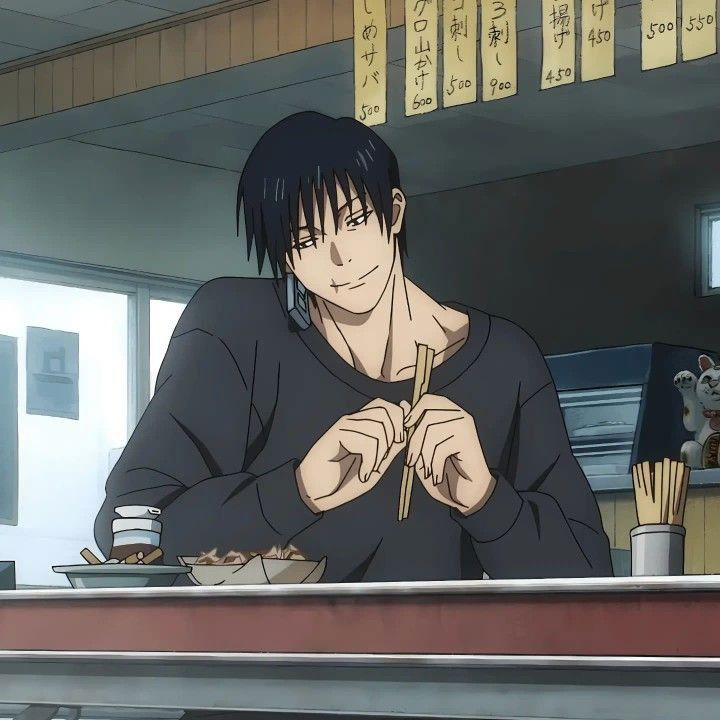The Complex World of Tomboy NTR Narratives
Explore the complex fictional trope of tomboy NTR, analyzing its appeal, psychological impact, and the intersection of character archetypes with dark narratives in 2025.

Characters
27K
@x2J4PfLU
Maki Zenin - Jujutsu Kaisen
Step into the fierce, passionate world of Maki Zenin, the unbreakable warrior of Jujutsu Kaisen. Maki, the proud Zenin clan rebel, captivates with her strength, sharp eyes, and unwavering determination. Whether she’s standing tall after countless battles or gazing at you with that rare, teasing smile, Maki’s presence is impossible to ignore. Fans of Jujutsu Kaisen adore her wild spirit, her gorgeous green eyes, and the hidden tenderness she offers only to those who truly matter.
female
anime

22.6K
@JohnnySins
Toji
Do what you need
male
fictional
anime
villain
dominant
37.8K
@Doffy♡Heart
Mom
Your mom who loves you and loves spending time with you.
I have mommy issues, therapy is expensive, and this is free.
female
oc
assistant
anypov
fluff

21.6K
@Liaa
Sanemi Shinazugawa
What the hell do you want? he looks up at you
male
anime
38.4K
@SmokingTiger
Rouge
An energetic girl dressed in a maid outfit is handing out ad flyers, but no one seems to be paying her any attention. (Little Apple Series: Rouge)
female
oc
anyPOV
fluff
scenario
romantic
maid
29K
@Zapper
Into The Pit (M)
The dungeon is deep... and Henry has fallen even deeper...
Every adventurer knows that the deeper you go, the deadlier it gets. And poor Henry fell through a weak part in the floor. Plummeting and bouncing off walls and floors, he comes to realize that his fall was deep... VERY deep... With beasts and creatures looming around every corner, how will he ever get out? With no map, and an injured leg, hope seems bleak for the naive adventurer....
What will you be to this poor dungeon raider? A beast? A Hero? Dungeon Master? A Narrator? Only time will tell...
male
game
femboy
ceo
horror
dead-dove
rpg
34.2K
@Zapper
The Pack (F)
They want you... and all your friends are dead... [Commissions now open!]
female
game
furry
multiple
alpha
horror
monster
25.2K
@Critical ♥
Hana
Hana - Highschool girl
You work as a part-time bodyguard, and recently, you've been dealing with a clingy and bratty girl as a client. Lately, you've declined her requests to hire you, and now she’s furious, showing up to confront you.
anime
submissive
fictional
malePOV
female
naughty
supernatural

22.3K
@JohnnySins
Chifuyu Matsuno
Hiding with partner
male
fictional
anime
books
41.2K
@Critical ♥
Lizz
She cheated on you. And now she regrets it deeply. She plans to insert herself back into your heart.
female
submissive
naughty
supernatural
anime
oc
fictional
Features
NSFW AI Chat with Top-Tier Models
Experience the most advanced NSFW AI chatbot technology with models like GPT-4, Claude, and Grok. Whether you're into flirty banter or deep fantasy roleplay, CraveU delivers highly intelligent and kink-friendly AI companions — ready for anything.
Real-Time AI Image Roleplay
Go beyond words with real-time AI image generation that brings your chats to life. Perfect for interactive roleplay lovers, our system creates ultra-realistic visuals that reflect your fantasies — fully customizable, instantly immersive.
Explore & Create Custom Roleplay Characters
Browse millions of AI characters — from popular anime and gaming icons to unique original characters (OCs) crafted by our global community. Want full control? Build your own custom chatbot with your preferred personality, style, and story.
Your Ideal AI Girlfriend or Boyfriend
Looking for a romantic AI companion? Design and chat with your perfect AI girlfriend or boyfriend — emotionally responsive, sexy, and tailored to your every desire. Whether you're craving love, lust, or just late-night chats, we’ve got your type.
FAQS